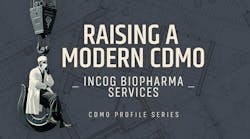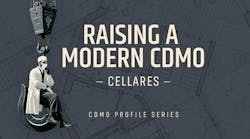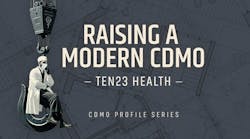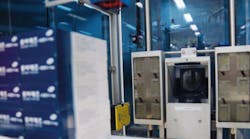Contract manufacturers today are expected to maintain standards of product quality above and beyond those of the past—and drug sponsors expect CMOs to be much more transparent about their operations and quality programs. For insight on the topic, we spoke with Preston Wright, the new senior director of Quality at Pharma Tech Industries, a large contract manufacturer of powders, solid dosage, and other products.
Wright’s background includes time as Quality Services Director positions at Morton Group Pharmaceuticals in Morton Grove, Illinois, and ANI Pharmaceuticals, Inc. in Gulfport, Mississippi. He was also formerly Associate Director of Quality Services with ELAN Holdings in Gainesville, Georgia. He has twice been awarded the President’s Award for Technical Achievement in Analytical Technology.
PhM: As PTI’s new Senior Director of Quality, what are your main goals right off the bat? How will you make your mark?
P.W.: My immediate goal is to ensure that PTI is on the best regulatory compliance footing as possible. Any thought of my “mark” is secondary. However, I am a big fan of the team concept in management. Lots of people talk of teams, but when you truly have a team, you’ll know it—the output will be greater than the sum of the individuals. That is what I wish to accomplish here, a team of quality professionals that produces a sum of accomplishments that exceed those of any of the individuals and provides a high value work force that brings the company to even higher levels of accomplishment.
On a more tactical level, my first goal here at PTI is the formal unification of the quality systems currently in use at the two primary manufacturing sites into a single cohesive system that embodies the best practices of both sites and the industry as a whole. A series of corporate-level procedural guidance documents will provide direction. These files will set the mandatory requirements for the various quality system elements. Individual sites will be able to author second-tier procedures, which follow the corporate guidance, but are then customized to meet the needs of their specific customers . . .
PhM: The drug industry has experienced many high-profile Quality-related crises of late. In your view, has this ramped up the importance of Quality in contract manufacturing?
P.W.: Certainly the recent quality-related events have heightened awareness. No one wants to see their company mentioned on the nightly news in a negative light. At some sites quality is a variable, swinging from a minimal presence when times are good to a major impact player when things are not going well. Hopefully, recent events will serve to mitigate the swings and let us move to a consistent quality presence that is both efficient and effective.
As a contract manufacturer, we are quite fortunate here at PTI in that quality has always been a main driver. When you come in the main entrance you see our quality mission stated in large letters for all to see, and that is backed up by a level of senior management support that has led to a high level of regulatory and ongoing quality compliance at both sites.
PhM: Are you seeing a flight to Quality among U.S.-based drug companies looking to outsource? Are they less likely to go overseas and more likely to partner with U.S.-based manufacturers such as PTI?
P.W.: I don’t know if I would characterize it as a flight to Quality, but we (PTI) are definitely seeing a significant increase in the number of potential customers contacting us about providing them manufacturing services. These are being largely derived from word-of-mouth testimonials from our existing customers and our industry reputation. The conversations are heavily weighted toward confirming our capability to supply a quality product; so quality is obviously a major driver. But one cannot forget the effect of pricing on the whole decision-making process of selecting a new supplier, especially in these tough economic times. Fortunately, the lean manufacturing model in use at PTI allows us to price our products very competitively and thus compete effectively with overseas suppliers.
PhM: Drug sponsors these days expect their contract manufacturers to be “partners in Quality” and have a more open and transparent relationship than in the past. Does this make your job harder?
P.W.: No, it just makes it different. In the partnership each site provides a broader view of their operation. Once that initial hurdle has been breached, the result can be a more efficient solution than was possible in the past. The partnership-type relationship strengthens the sense of ownership of the product for both parties. The product owner feels that the CMO is more like an extension of their production capability and thus wants it to succeed while the CMO feels that the product they are producing is “theirs”—a reflection of their capabilities and their desire to please their partner. Everyone wins.
PhM: What’s your take on ICH Q9 and Q10 and the idea of risk-based Quality Systems? Has the Quality by Design initiative changed the way you approach your work over the years?
P.W.: I have been in the pharmaceutical industry for over 30 years. The methodologies employed today are light years ahead of those in the past. In the long-ago past, the design phase encompassed finding the right amount of square footage, and equipment that was underutilized. Risk assessment was always prefaced with “I think…”. The implementation of formalized practices such as enumerated in Q9 and Q10 makes ensuring the product integrity much easier to achieve. The formal approach to identify concerns and related control points, and to follow them statistically, provides a basis for understanding if your process is trying to trend out of its required path and impacting any potential risk.
PhM: Metal and glass particulates continue to be major concerns for the production of powders and liquids. Is technology (such as X-ray detection) the answer, or is there more to it than that?
P.W.: This harkens back to the discussion of Q9 and Q10. Rarely is a one-dimensional approach going to meet your needs. The FDA has repeatedly emphasized that quality must be designed in, and not just tested for at the completion of the process. At PTI we use technologies such as X-ray to identify particulates. Testing controls are in place from the raw materials forward. Processes are designed to minimize product exposure. By doing these items up front, the use of finished product particulate testing is to verify the quality that was designed into the process.
PhM: One of PTI’s selling points is its diverse offerings and capabilities (“over 300 sku’s”). What’s your general approach or philosophy to mitigating the risk of cross-contamination?
P.W.: Our diverse manufacturing environment does present a challenge. As with other issues addressed above, our approach is multi-dimensional, and an outgrowth of the risk assessment performed with each project. The techniques employed are predominantly those that are considered tried and true: Material segregation, production areas focused on families of related products to minimize the number of compounds in the area, multiple layers of material identification, closed production/packaging systems, specific cleaning procedures, and environmentally isolated suites are some of the techniques employed.
PhM: Pharma QA/QC testing has benefited recently from rapid microbiological methods and accelerated time to results. Are you embracing rapid methods at PTI, or are there other new technologies or methods within microbiology that you’re exploring?
P.W.: Our experience has been, to date, that our customers are generally requesting that we stay focused on the standard USP micro methodologies. However, for over a decade we have had the capability to utilize bioluminescence techniques to reduce the micro hold times to 24 hours or less.





